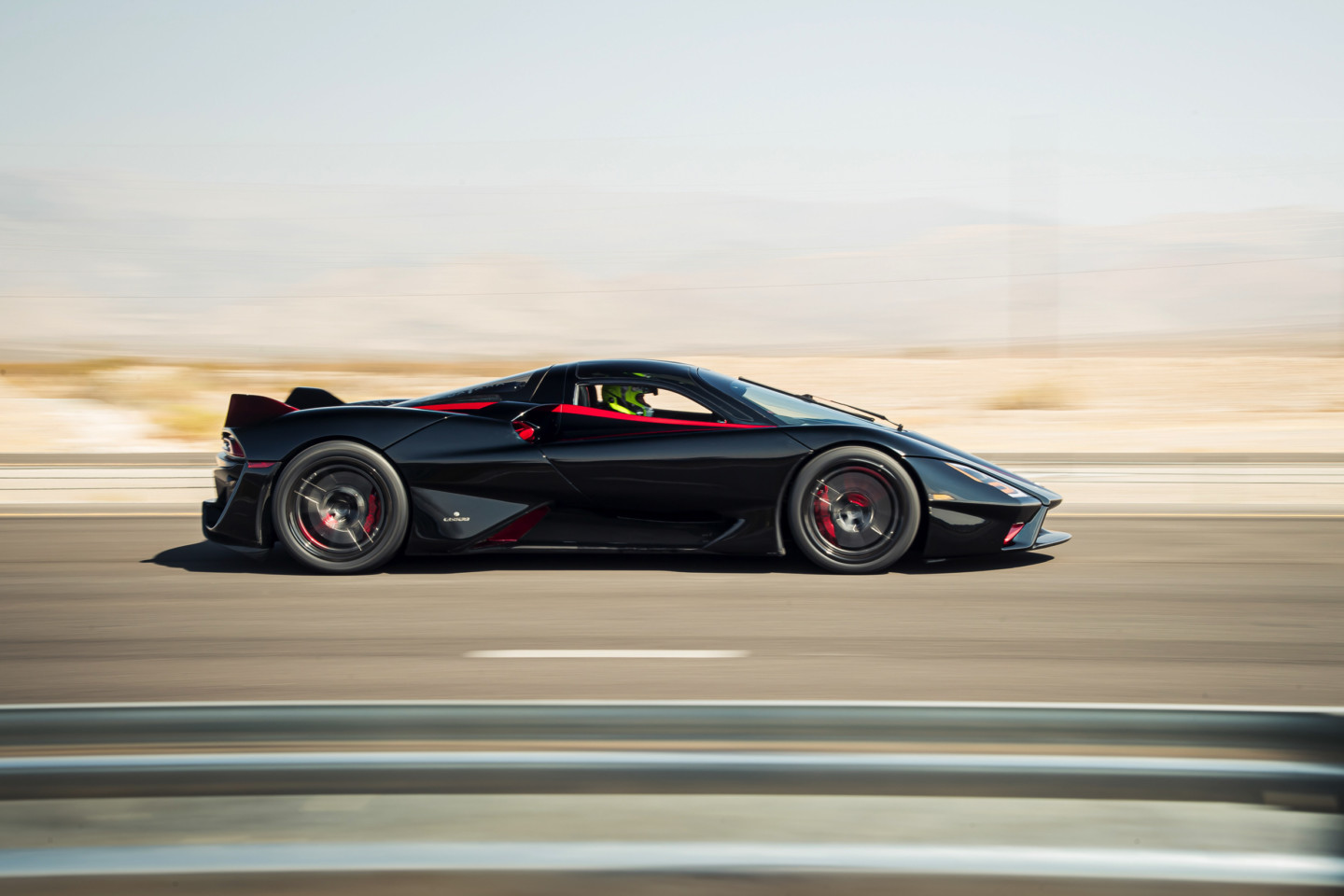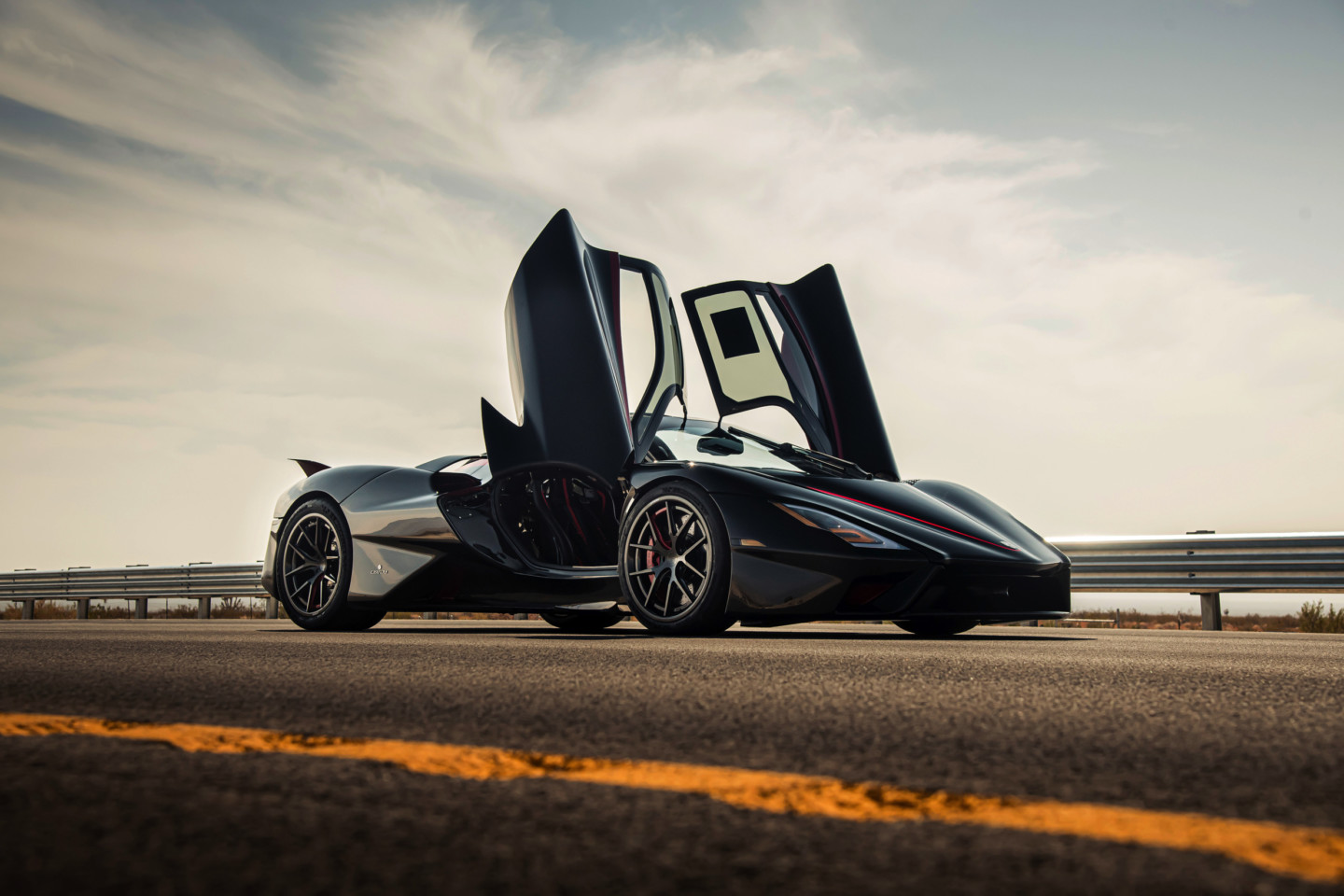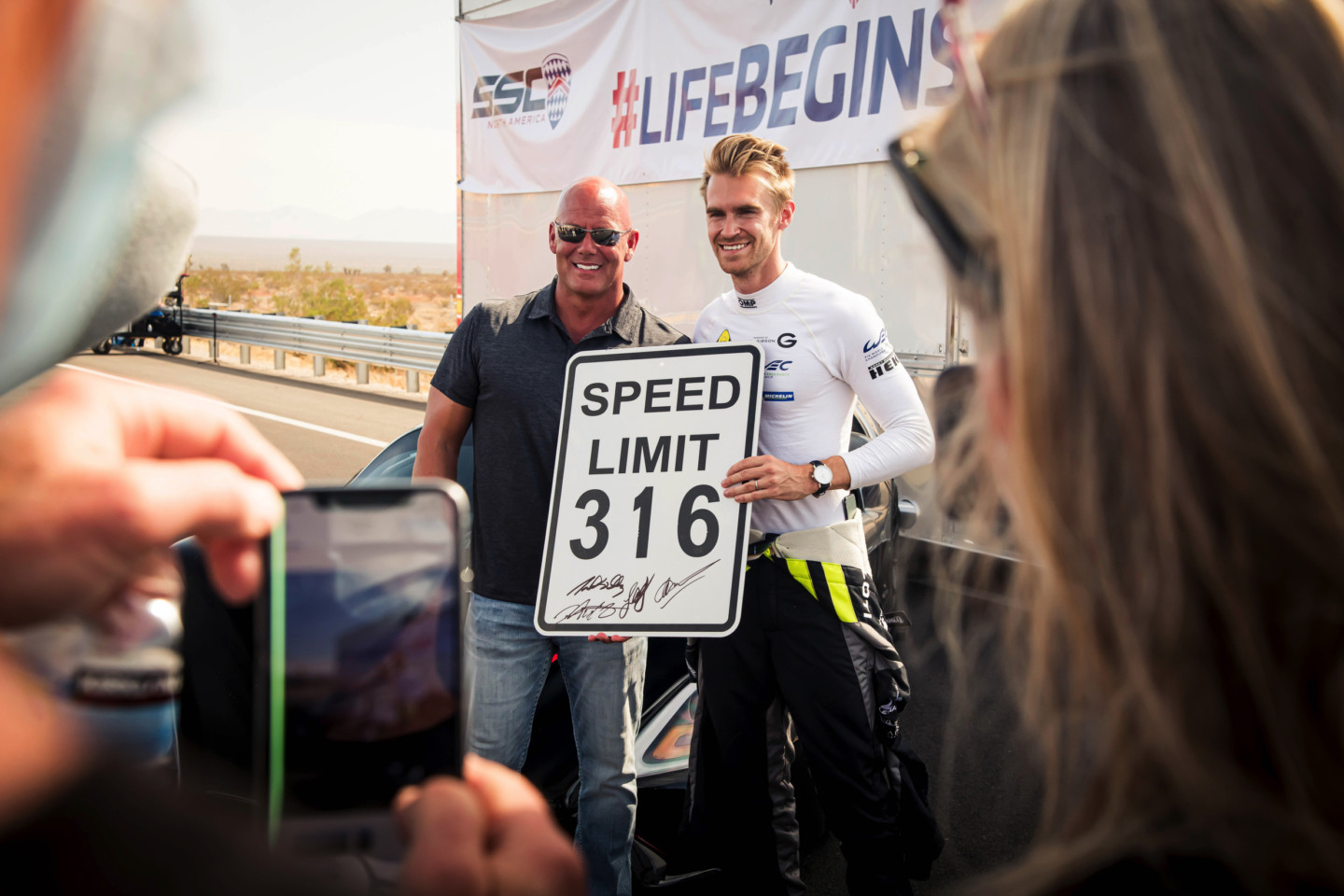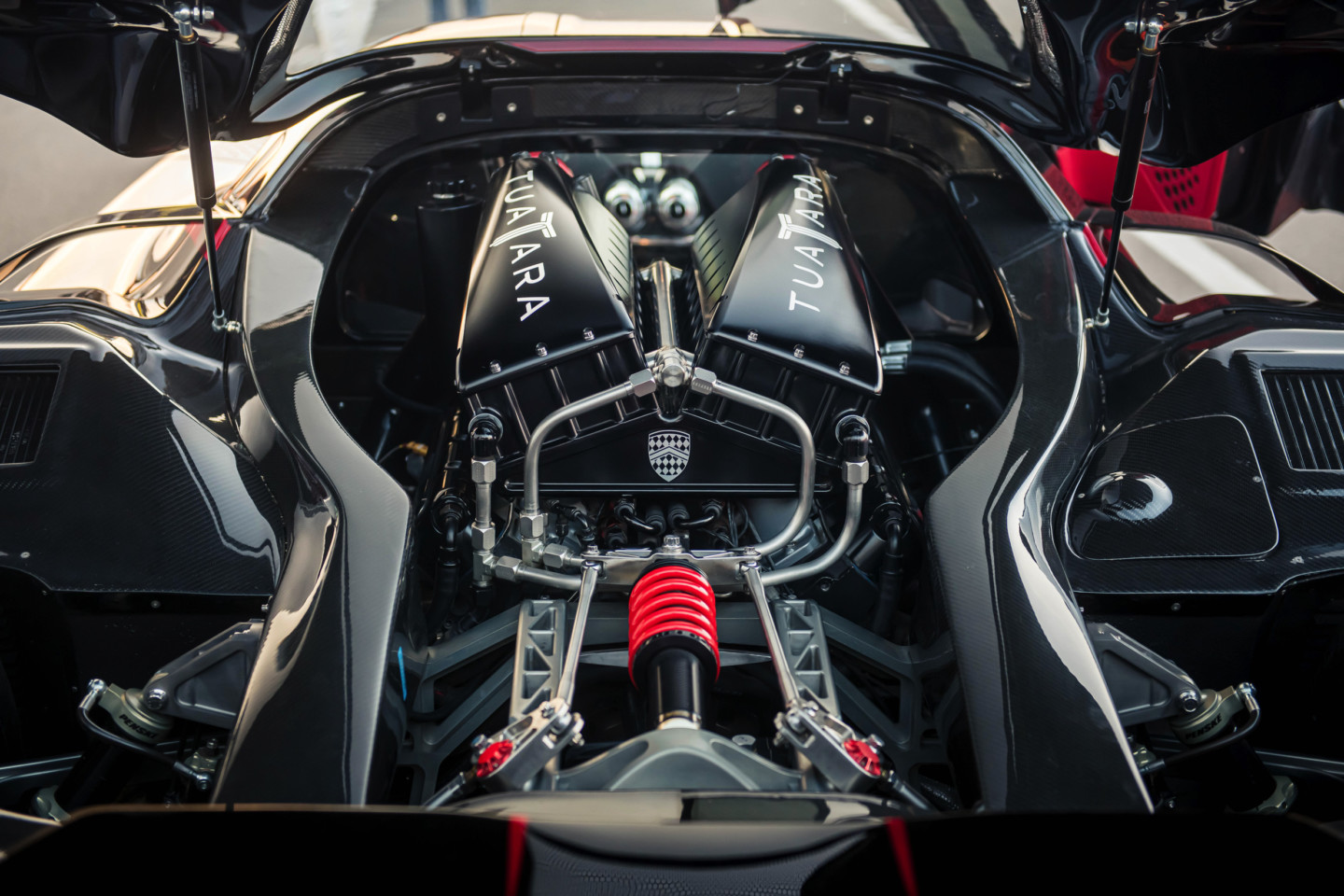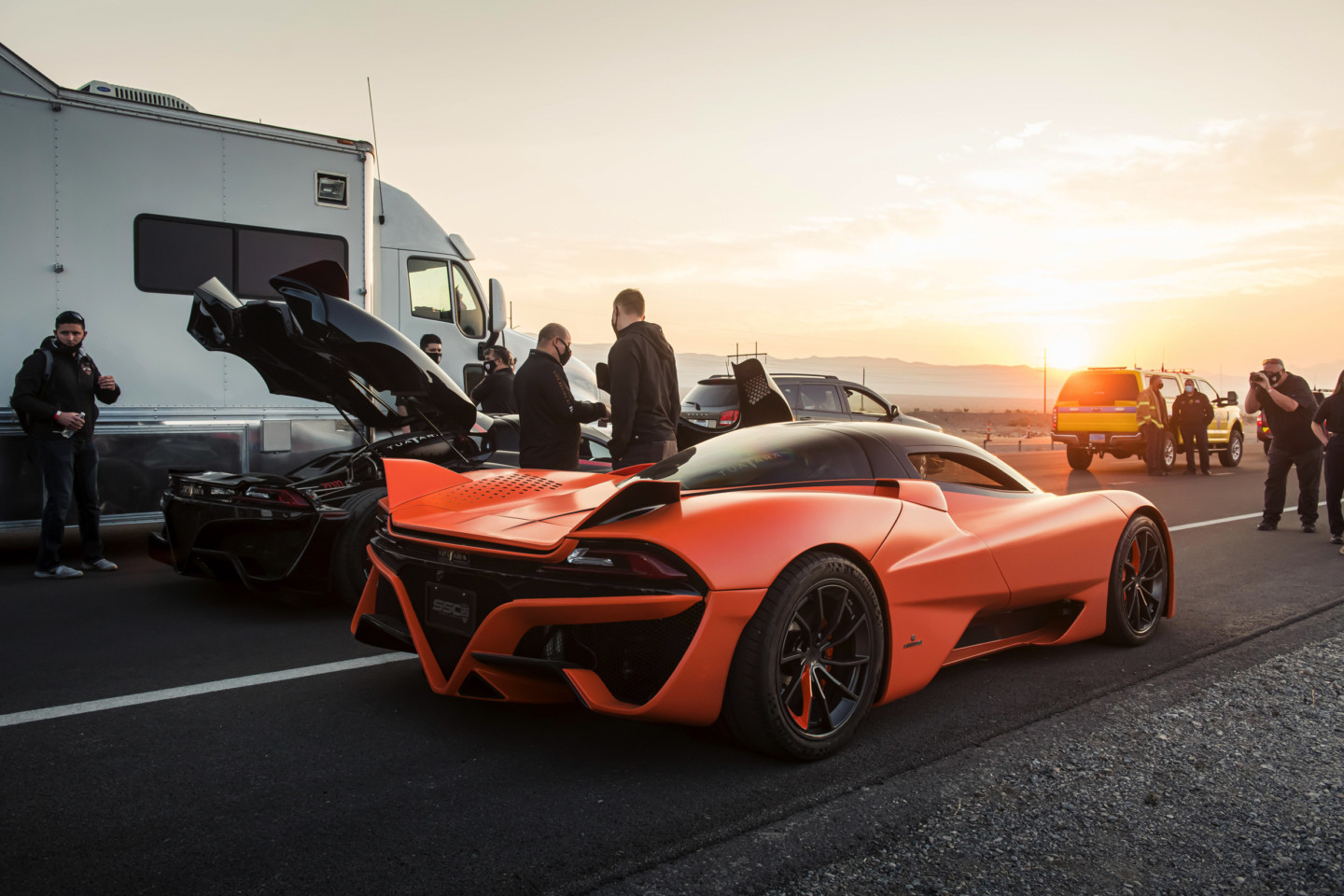Supercars have always been a fascinating subject. These cars offered cutting edge designs, wild engine combinations, and meticulously designed interiors. The only problem is when you do a google search of American made supercars; in our opinion, the results are a little underwhelming.
Photos By: SSC North America
In a top ten search for American supercars, you will find the Camaro ZL1, Corvette Z06, Dodge Hellcat, Dodge Viper GTS, and Mustang GT500. While these are killer machines, unlike Ferrari, Lamborghini, McLaren, and Bugatti, they don’t scream “Supercar.” Now, some of these vehicles on the US list are supercar worthy like the Ford GT, Hennessey Venom GT, and the Mosler MT900s. These cars have the looks and performance to back it up. Another vehicle that has what it takes for American supercar and hypercar status is the SSC Tuatara.
SSC’s Tuatara is a genuinely awesome machine and one that just reclaimed the coveted title for the world’s fastest production vehicle. SSC North America set out on October 10th, outside of Las Vegas, Nevada, to put the Tuatara to the test along a seven-mile stretch of State Route 160.
To claim a world record, the Tuatara had to meet the following guidelines:
- Be a production vehicle that is identical to the same car a customer could purchase
- Drive the same route in opposite directions, and take the average of the two speeds: this accounts for winds and road grade that may have favored the vehicle traveling in only one direction
- Achieve this feat on a public road: this ensures ‘real world’ driving conditions that a race track or runway might not offer
- Have its speed tracked by a certified GPS measurement system, and have two world-record sanctioned witnesses on-site for verification
- Run on street tires and non-race fuel
With an internationally acclaimed professional racing driver Olver Webb behind the wheel, the car achieved an average speed of 316.11 mph. What’s even more impressive is the Tuatara hit 331.5 mph in what seemed to be an effortless pass. “There was definitely more in there. And with better conditions, I know we could have gone faster,” said Webb. “As I approached 331 mph, the Tuatara climbed almost 20 mph within the last five seconds. It was still pulling well. As I told Jerod, the car wasn’t running out of steam yet. The crosswinds are all that prevented us from realizing the car’s limit.”
SSC North America said, ” Webb pushed the SSC Tuatara to an average speed of 316.11 mph (508.73 km/h) following two consecutive high-speed test runs of 301.07 mph (484.53 km/h) and 331.15 mph (532.93 km/h). Per record criteria, the Tuatara traveled in opposite directions, clocking its speeds within one hour, to break the world record for the fastest production vehicle.” You can read the official press release here.
In addition to breaking the world’s fastest production vehicle record, the Tuatara broke the world records for:
- Fastest Flying Mile on a Public Road at 313.12 mph
- Fastest Flying Kilometer on a Public Road at 321.35 mph (517.16 km/h)
- Highest Speed Achieved on a Public Road at 331.15 mph
By now, you might have already figured out why we are covering this news item. This American made hypercar is not powered by a quad overhead cam V-16 or anything crazy exotic. Instead, it houses a pushrod V8 that’s based on the LS platform. Nelson Racing Engines was in the mix of the Tuatara’s engine build, and it’s a monster.
With 5.9-liters and Nelson Racing Engines twin-turbos nestled between the rear wheels, this powerplant cranks out 1350 horsepower on 91-octane pump gas and 1750 horsepower on E85. The engine redlines at 8,800 rpm and uses a flat-plane crank along with a host of go-fast goodies. A pair of air-to-water intercoolers sit high above the engine, which is mounted to a short runner intake manifold that houses 16 fuel injectors. A Billet Specialties serpentine drive system was used along with an ATI Performance Products Super Damper to keep the accessories spinning, including air conditioning.
Whoever thought that one of the world’s most swapped engines would also power the world’s fastest production vehicle? I guess the old pushrod V8 isn’t so bad, after all.
Congratulations to SCC North America on this tremendous feat and Nelson Racing Engines on a killer engine build.

